#hyperparasitoid
Explore tagged Tumblr posts
Text



Genus Torymus ovipositing a Striped Volcano Gall Wasp (Feron atrimentum)
#inaturalist#naturalist#nature#ecology#zoology#biology#wildlife#wasp#wasps#hymenoptera#hymenopteran#hymenopterans#parasitoid#hyperparasitoid#parasitoid wasp#photography#nature photography#wildlife photography#hawks photos#animal photography
167 notes
·
View notes
Text
When your life cycle is so ridiculously complex, that it's a miracle you exist. Trigonalid wasps are super weird, but also very interesting. They are hyperparasitoids. The female will lay thousands of eggs on foliage, with the intent of the eggs being ingested by a herbivorous host, like a caterpillar. Once the eggs are consumed, they will hatch and attack any already inhabiting primary parasitoid host, like a Tachinid fly or Ichneumonid. It doesn't end there. Some Trigonalid wasps are parasitoids of Vespid wasps, and for their continued survival, the original host (caterpillar), must be brought back to the nest where it is fed to a Vespid wasp larva. The larva consumes the caterpillar and Trigonalid larvae that are inside and becomes parasitized. The individual presented in my drawing is based on Taeniogonalos gundlachii. There are probably other animals out there with even more complex life cycles! As far as wasps go, I'd consider this survival strategy to be very intricate.
I have added a chart that explains the phenomenon.
In the latter case, the caterpillar full of Trigonalid eggs would be preyed on by a Vespid wasp and brought back to the nest. Once fed to a Vespid wasp larva, the remaining Trigonalid larva then consumes the host.
https://www.researchgate.net/figure/A-diagram-describing-the-life-stages-of-the-trigonalid-hyperparasitoid-Orthogonalys_fig1_221959174
https://www.researchgate.net/publication/221959174_A_Scattershot_Approach_to_Host_Location_Uncovering_the_Unique_Life_History_of_the_Trigonalid_Hyperparasitoid_Orthogonalys_pulchella_Cresson#pf2



#hymenoptera#insect#entomology#wasp#wasps#apocrita#cartoon#Trigonaloidea#Trigonalidae#Taeniogonalosgundlachii#Hyperparasitoid#parasitoid#comic#parasitica
797 notes
·
View notes
Note
I love parasitic wasps so so so much, they r everything 2 me...... some can even change the behaviour of a catapillar to make it defend the larvea once they emerge!
Do you have any favourite types/fun facts you'd like to share?
I don't really have a favorite specific parasitic wasp, but I'm a big fan of hyperparasitoids just because it's fun that they're parasites OF parasitoids. Here's a brief video about them:
youtube
111 notes
·
View notes
Text
#noise#noise music#ambient#ecological#environmental#field recording#experimental#experimental music#wasps#hymenoptera#oaks#quercus#trees#plants#galls#gall wasps#parasitoid#hyperparasitoid#fractal#fractals#music#Bandcamp
2 notes
·
View notes
Text




WIPsday: "why is the next chapter of BSBiB taking so long", you may be asking. "Why do I feel like I'm barely making progress on this draft," I ask myself. "I know I'm definitely putting work into this."
My humble draft document:

#WIP#[DRAGS HANDS DOWN SIDES OF FACE]#everything i have PUBLISHED of BSBiB totals 14k words. i have 6 scenes left to finish. this is chapter 4 of 8. pain and agony#i hope i get some nice comments when this chapter is done bc it's a monster OTL like a caterpillar secretly full of wasp eggs#and the wasps are... more writing i have to do....or plot points i'm finally pinning down. and they also have more wasps inside them#[has been reading about hyperparasitoid wasps this week and just wants to share wasp facts]
5 notes
·
View notes
Text
the thing is about the silt verses is that a lot of the relationships people have with their gods can be seen as a sort of mutualism or parasitism depending on the shape of their relationship but that shit just has me wondering if there's a hyperparasitoid category, like those wasps what lay eggs in other parasite wasps.
like in particular I'm thinking about if there's an in-universe equivalent to Sacculina and how that affects you and your people when crabs take such a hugeass role in the faith
245 notes
·
View notes
Note
terribly sorry if this is a weird question but i would LOVE to hear more about wasps . funky little dudes

wasps are a relatively new species in terms of insect evolution, having appeared in the jurassic period alongside the first dinosaurs. there are hundreds of thousands of species, which could include ants and bees depending on your exact definition. they're all included in the group apocrita, or the "wasp waisted" hymenoptera. they are some of the most successful insects on the planet.
DID YOU KNOW?: the stinger of apocrita is a highly adapted ovipositor, the organ used for egg laying.
STEP ONE: their ancestors, the sawflies, had evolved a serrated ovipositor that could bore into plant material as a safe place to lay their eggs.


STEP TWO: the first wasps would use the ovipositor to instead lay their eggs inside of other animals (parasitoidism), which then provides the developing young plenty of food. many of these wasps would develop a unique variety of venoms to aid in the capture of prey, often by paralysis.
DID YOU KNOW?: there are more parasitoid wasps than any other kind of wasp, with an estimated 100,000 species! this includes the iconic cicada killer wasp.
STEP THREE: the transition from egg laying to defense is not entirely understood, but is believed by some to have been a direct response to predation by vertebrates. if you think about it, it's not all that easy to sting through a tough exoskeleton (though it can be done), it's much easier to sting soft, fleshy things that are trying to eat your delicious grub children. these wasps no longer lay eggs with the ovipositor, instead having an opening at the base of the stinger. the venom would be adapted to illicit a pain response, a harsh lesson to not mess with wasps!
DID YOU KNOW?: male wasps CANNOT sting as they do not have an ovipositor. though, some males will still mimic stinging, or even have pointed abdomens to help sell the illusion.
QUICKFIRE ROUND:
while wasps are famously eusocial and will often live in large communal hives, the vast majority of wasps are solitary and live on their own.
the largest species of wasp is the northern giant hornet, who's queens are around 2 inches in length. the smallest species of wasp is also the smallest insect ever! dicopomorpha echmepterygis males have been measured as small as 139 micrometres in length.
its common knowledge that wasps can sting multiple times and honey bees cant. this is a unique adaptation of the honey bee, who deliver a more potent sting by leaving the stinger embedded in the victim as it continues to pump rounds and rounds of venom. unfortunately, the stinger is directly attached to many vital organs, which are then damaged in the process, causing the honey bee to die.
insects breathe by absorbing oxygen directly into their "blood". wasps aid in this by rapidly expanding and collapsing their abdomen to force air in and out. if her butt is vibrating, shes just taking a breath :)

the iconic coloration of the wasp, usually yellow and black, is part of their defensive strategy! this is a form of aposematism, the advertising of danger to potential predators. they want you to notice them, so you know to steer clear!
the coloration is SO iconic that thousands of insect species mimic it in hopes of also warding off predators. this includes flies, moths and butterflies, and even their own ancestors, the sawflies.
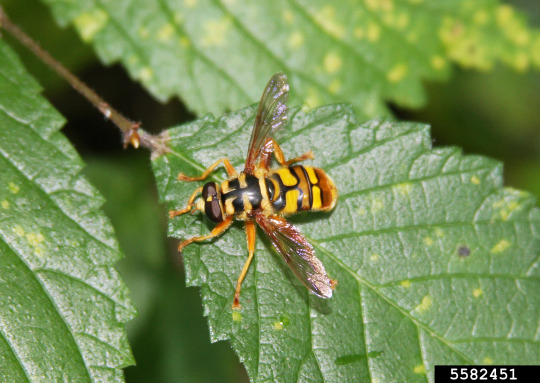

parasitoid wasps are very specific in their choice of prey, likely due to the unique cocktail of venom they must possess to influence any given species. for any arthropod, there is a species of wasp that specializes in parasitizing THAT specific arthropod.
because i know some people are wondering, the venom of parasitoid wasps can only effect arthropods, there will be no wasp based mind control within the next few million years. some parasitoids have been known to sting defensively, which is still quite painful depending on the exact species.
some wasps are HYPERPARASITOIDS, meaning they will lay their eggs on other parasitoids that are already parasitizing something. its parasitoids all the way down.
one of these hyperparasitoids is the velvet ant. despite it's common name, they're actually a species of wasp with flightless females. the males do possess wings, and in some species, will assist the female by carrying her to an environment with better resources.
the venom of gall wasps will, when inserted into a tree or other vegetation, cause it to grow a mass, known as a gall. basically a bootleg fruit, filled with nutrients. these wasp galls will then safely house the wasp's young which eat it from the inside out, before emerging as adult wasps.
obviously, theres wasps that parasitize the gall wasps inside the gall.
fig wasps are the only animals that can pollinate figs, and do so by crawling inside to lay their eggs before dying inside the fruit. well, the only animal other than humans, which find figs quite tasty but don't typically enjoy eating dead wasps.
i probably wont ever get a better opportunity to share this information, sorry: the queen honey bee mating with a drone is audible to the human ear, making a popping sound. the drone's endophallus (penis) is violently detached in the process and he dies soon after.
lastly, lets just marvel at the beauty of the wasp. they have some of the most striking appearances of any animals on earth.






i am just fillled with awe when i look at them. a powerful and intimidating predator that takes great care in raising the next generation. perhaps my favorite animal.
#SORRY. YOU HAVE ACTIVATED HYMENOPTERA SPECIAL INTEREST MODE.#corrections: i say 'species' when i mean 'group' a lot. also i mixed up jurassic and triassic dinosaurs had already been around for awhile
164 notes
·
View notes
Text
Parts of the world got to experience the excitement of a solar eclipse this afternoon, and later on I was treated to a tiny partial lunar eclipse. The little green moon, Amphibolips quercusracemaria oak gall, and a tiny hyperparasitoid wasp!
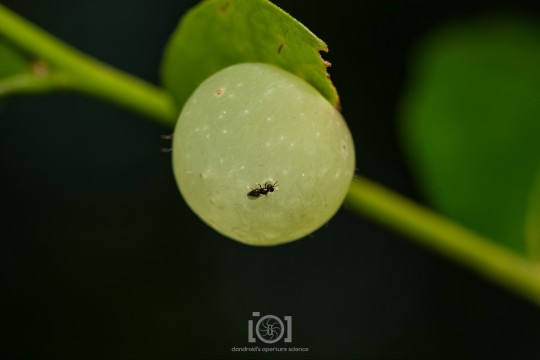
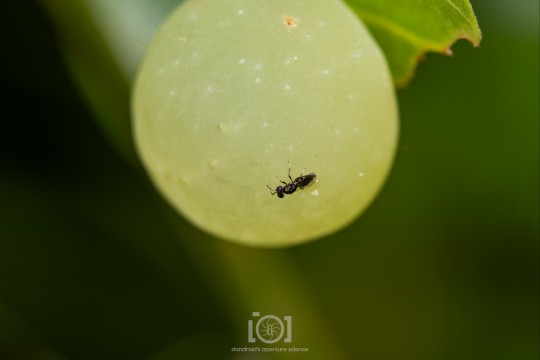
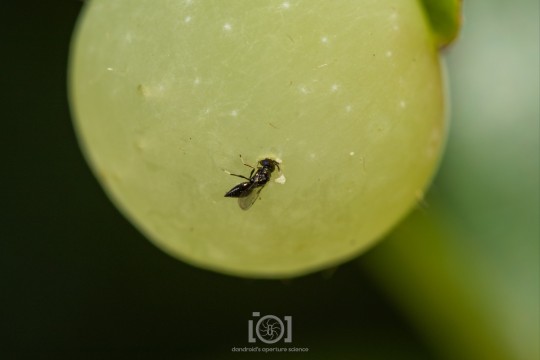
363 notes
·
View notes
Text
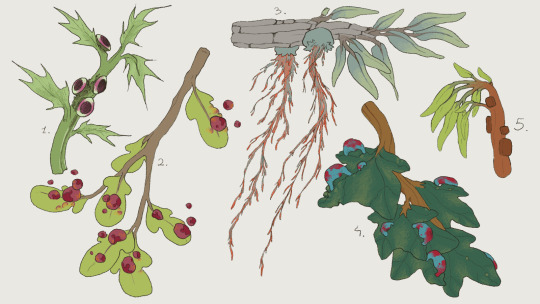
Okalivember day 2: Galls!
The ocular jasani gall wasp makes galls on the stems of an annual plant full of needles, making them hard to reach without getting pricked by the leaves.
The buoy mutabuta gall wasp lays its eggs on the leaves of a small shrub that grows near rivers. The biggest gall that actually touches the leaf has a larvae inside, but the small floating ones are decoys to protect the larva from predators or hyperparasitoids.
The lichen agasur galls have long tendrils that mimic a lichen that often grows alongside them on the branches of the tree whose bark they've been laid in.
The bridge borolsa gall wasp makes its galls on the large leaves of boreal trees. Due to their bright colors, they're sometimes gathered and used as beads or small jewels.
The salt sijaga gall wasp goes for the young, tender branches of a tree that grows in brackish swamps. The salt gathers in the gall formation, protecting them from mold and predators due to being unpalatable.
#okali#fantasy#wandering okali#art#graphi's things#worldbuilding#species#speculative biology#specbio#xenobiology#fantasy biology#fantasy creature#creature design#gall wasp#bugblr#fantasy worldbuilding
76 notes
·
View notes
Text
Gall wasps article got everything, parthenogenesis

Hyperparasitoids

Alfred Kinsey

13 notes
·
View notes
Note
what is your favorite kind of bug + why + when and where does it come out and do u have any photos :3
im doin top three cause fuck u

genus torymus, theyre hyperparasitoids! they lay their eggs in other wasps galls, this one was layin hers in a red cone gall on a valley oak, i saw it last spring but hawk finds em all the time

adesmus acanguana, a beetle with only 1 observation on inat, which is mine :)
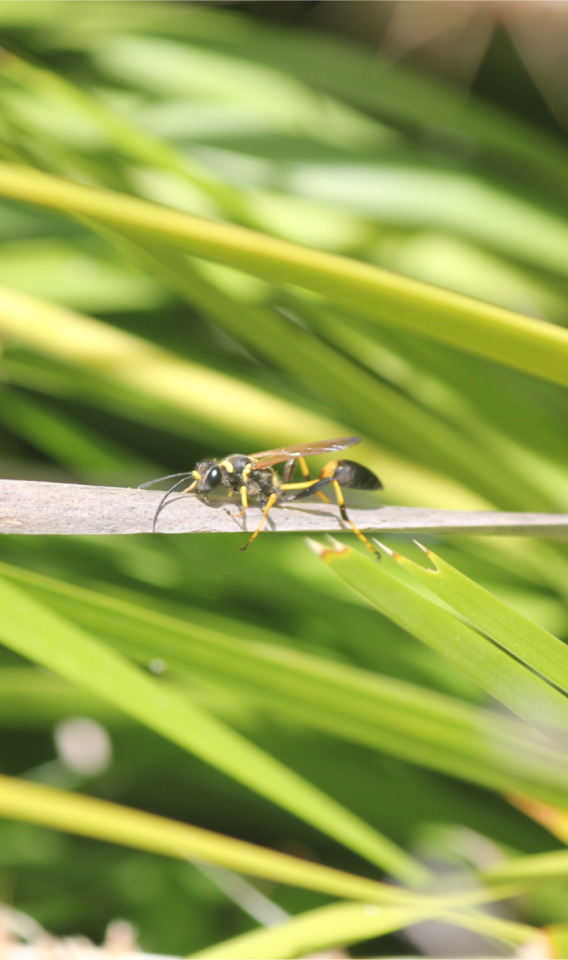
sceliphron caementarium, the yellow legged mud dauber! ive seen them in my yard and at my college multiple times :) they're very very sweeties and pose very nicely! ive seen them both mostly in summer+spring
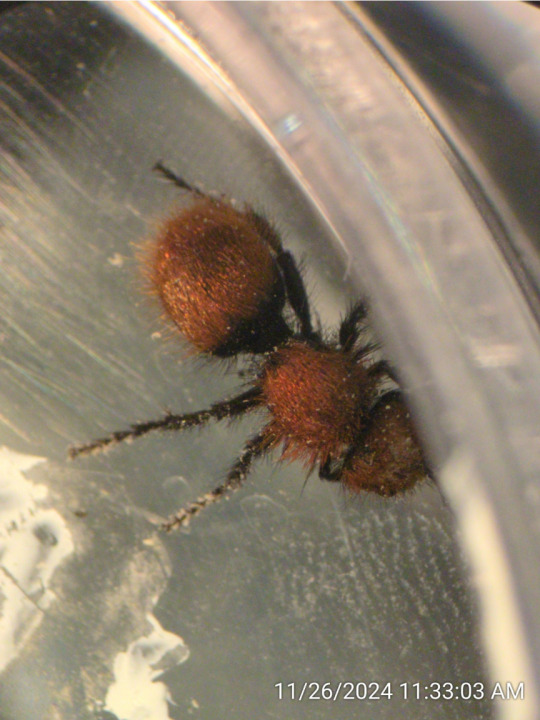
dasymutilla aureola, the pacific velvet ant :) my fave girl ❤️🧡🖤 saw 2 of these, both last autumn
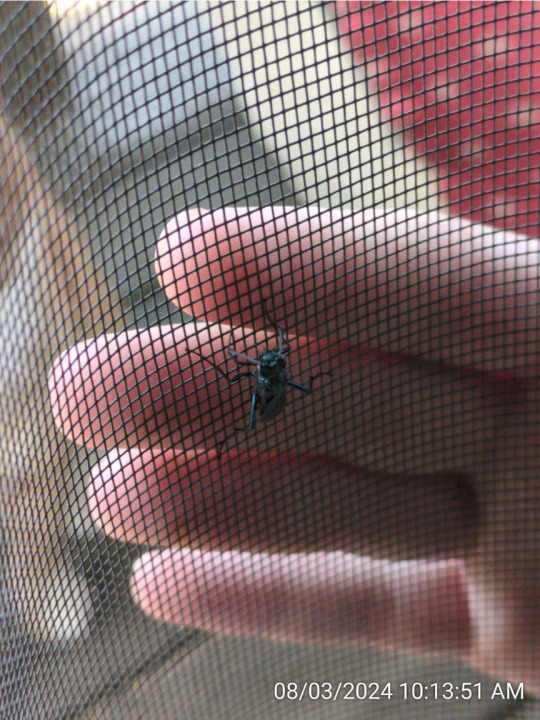
(likely) chalybion californicum, the common blue mud dauber ! my cats catch em a lot but they nest underneath their catio :( 💙
honorable mention:
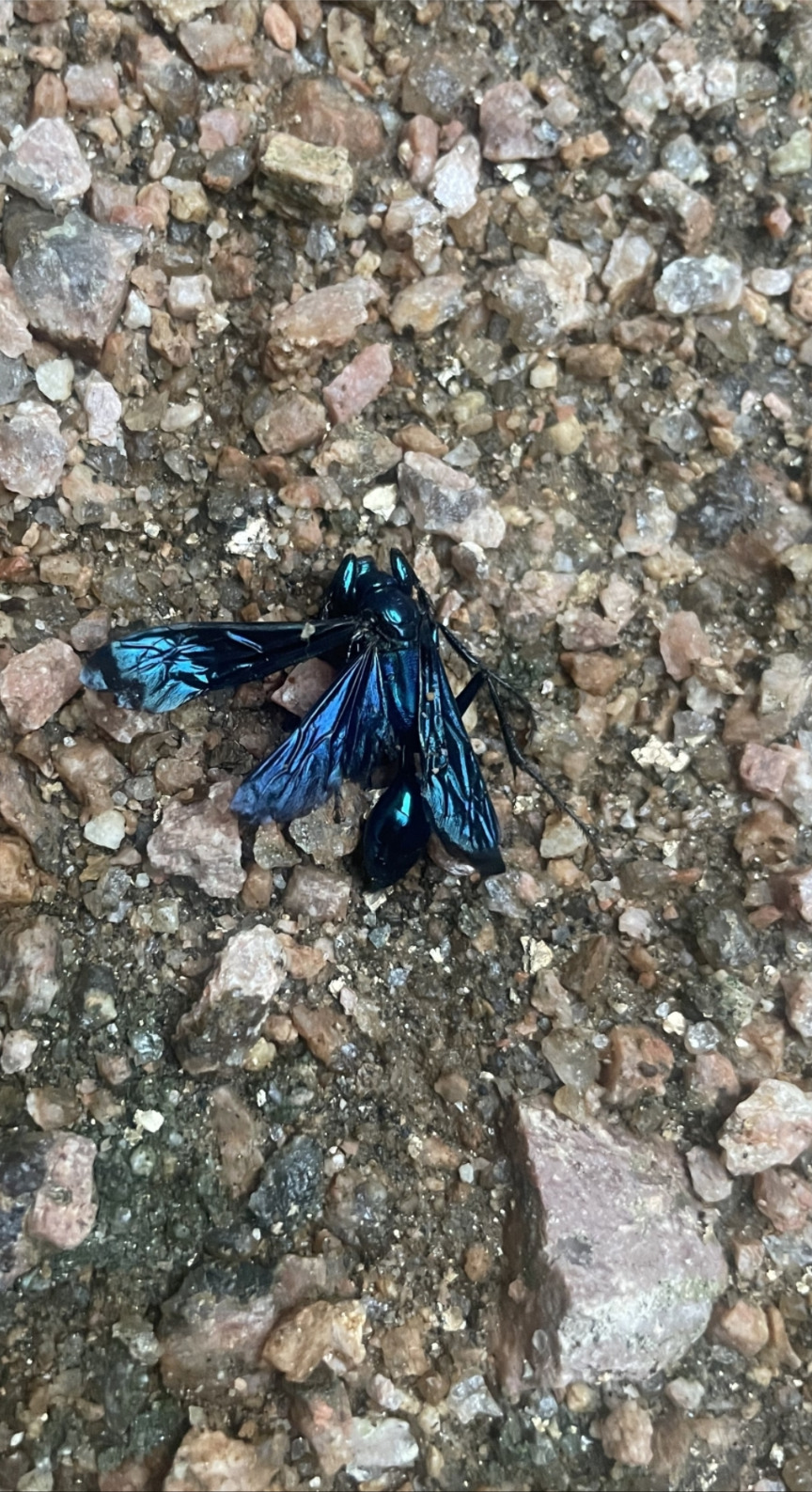
this weird unided sphecidae that i got shipped by ender
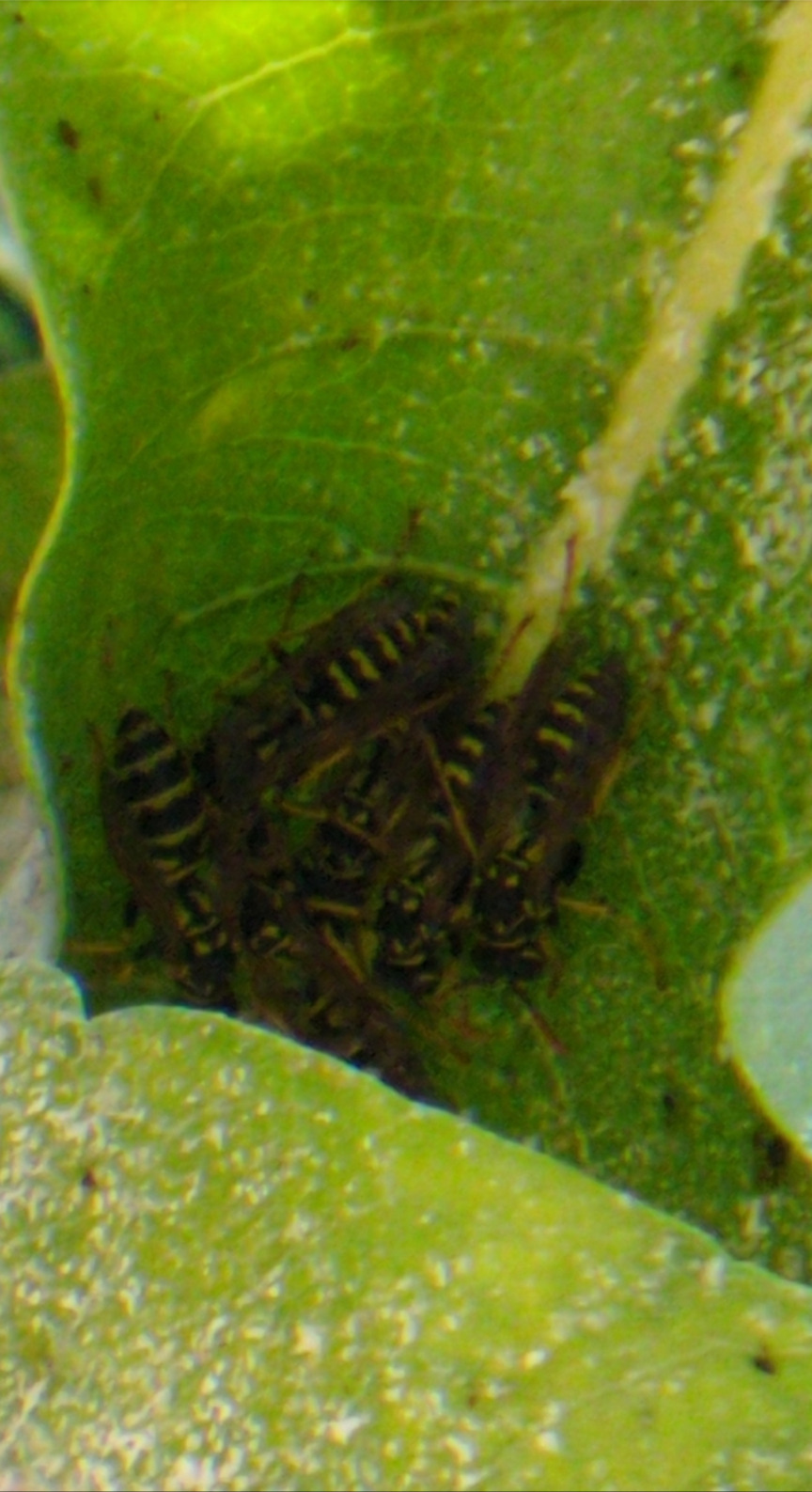

these asian paper wasps i found clumped up once 💛 so cutes
5 notes
·
View notes
Text
If you think this interspecies pregnancy is wild, you're either going to love most parasitoid hymenopterans. Or even hyperparasitoid hymenopterans
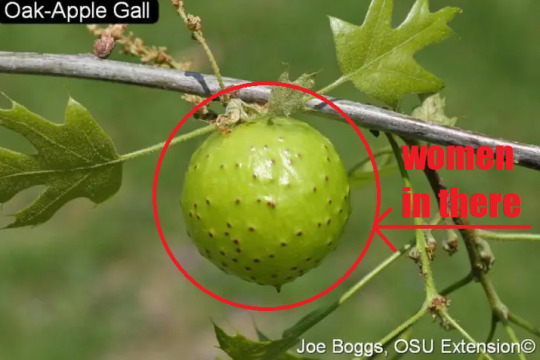
#i photographed a hyperparasitoid ovipositing on a gal the other day. it was very cool. maybe i should post it#hawk talks
5K notes
·
View notes
Text
parasitoid waspgirl laying eggs in a caterpillar. hyperparasitoid waspgirl laying eggs in a parasitoid wasp egg. fairyflies like dust motes.
2 notes
·
View notes
Note
I raised a lot of butterflies, and all of them just got egged by Chalcid wasp, I love your account so much can we trash on them together? I think almost every bug lives and dies without having to resort to putting in their eggs in something else, I know bugs are brutal, but I just feel like that is crossing a line past just normally killing. I also don’t think they deserve flowers. I genuinely understand the food chain, and normally what affects what but I feel like if all wasps died it would be a plus. We would lose figs, but the amount of other bugs we would gain would add more pollination than whatever they were doing. The worst part is, in irl i’ve met multiple people that raise wasps, what the hell ?!?!?, I like literally every living animal, but wasps are the biggest assholes of the bug world and they are really adding more rn? Grinds my gears, hope to hear back from you
You must be new here, because I will never talk negatively about any type of bug, and especially not about wasps, which already get a ton of unwarranted hate. And I'm going to give you the benefit of the doubt that this is genuine and not the rage bait it reads like.
There are something like 150,000 described species of wasp in the world. That's just the ones that have been described, and is likely not even the tip of the iceberg in terms of actual living species out there right now. They fill niches you'd never even consider. Every single one of those species disappearing right now would have catastrophic effects on every single environment in the world. Ignoring all other species that play important rolls, parasitoids and hyperparasitoids play a super integral part in population control of other animals. Not only that, but no animal has to justify their existence. They're not living the lives they live to be assholes, they're doing it to survive and reproduce, which is literally their only goal. That's the goal of any living thing. Arbitrarily deciding this one type of (extremely diverse) bug only is capable of malice and doesn't deserve to live shows a deep misunderstanding of biology and ecology and the food chain.
#uhhhhhspencerreid#negativity#please don't be assholes in the comments despite how misguided this ask is
210 notes
·
View notes
Text

Chalcid Wasp (genus Pseudoceraphron), wingless female, Kaeo, New Zealand
I couldn't find much info on the wasps in this genus, but they tend to be very tiny. Many of the species in this family (Chalcidae) are parasitoids or hyperparasitoids.
photograph by flossiepip | inaturalist
37 notes
·
View notes
Text
A common medical parasite with a symbiotic relationship with humanoids is P. vengativa util. P. util is a predatory, hyperparasitoid protozoa distantly related to Toxoplasma Gondii that inhabits the digestive system of species commonly living in low-population areas.
This protozoan is widely used as parasitic prevention due to the production of a chemical similar to clindamycin during the organism’s reproductive stage. Although not harmful to humanoids, P. util reproduces within other intestinal parasites, either rendering them infertile or killing them, while the chemical it produces prevents further infection. Most organisms with P. util rarely, if ever, have parasetic infactions, most of which are mild and go away quickly.
Commonly regarded as normal bacterial flora, most humanoids will ingest oocysts of the protozoa at a young age or gain them in fetal development to prevent parasitic infections related to or as a cause of ingesting contaminated water, raw meat or other infected substances.
In addition to sterilizing multicellular parasites, P. util also consumes bacteria typically associated with gastroenteritis in direct response to the body’s immune response. It also consumes some types of stomach flora in herbivorous humanoids, lack of which can be prevented though ingestion of probiotics and fermented foods.
It is typical for oocysts to be ingested at a young age to prevent instability of stomach flora during adulthood (after the body’s immune system has fully developed), which can cause complications such as stomach upset, acid reflux and temporary development of allergies while the digestive ecosystem regains balance. These conditions may be permanent in some cases.
3 notes
·
View notes